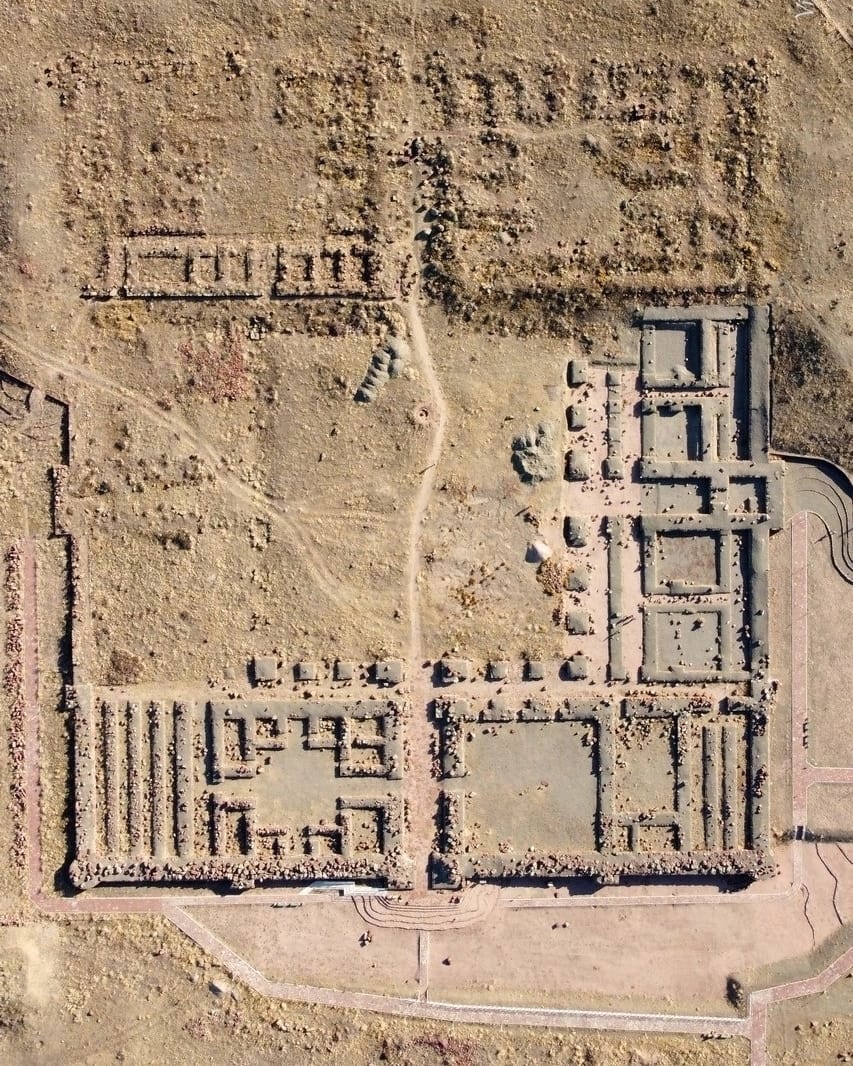ASTANA – In 1982, the United Nations Educational, Scientific and Cultural Organization (UNESCO) General Conference established April 18 as the International Day for Monuments and Sites, known as World Heritage Day. To mark this date, the Kazakh Ministry of Culture and Sports has listed the country’s top five historical places and monuments.

Khoja Ahmed Yasawi Mausoleum. Photo credit: @trip2centralasia.
Khoja Ahmed Yasawi Mausoleum
The mausoleum of Khoja Ahmed Yasawi, included in the UNESCO World Heritage List in 2003, is one of Kazakhstan’s most famous historical sites and an outstanding work of medieval architectural art in Central Asia.
The mausoleum, built at the time of Timur (Tamerlane) in the 14th century, is a holy place for the Kazakh people. The remains of 24 khans and sultans, 57 batyrs (warriors), and 18 biys (judges) are buried near this monument.
The mausoleum is 39 meters high. The structure consists of 35 rooms connected by corridors. A sacred giant cauldron, Taikazan, is located in the mausoleum’s central room.
Tanbaly archaeological site
Petroglyphs of the Tanbaly or Tamgaly archaeological landscape are one of the most important sites of the country’s historical heritage. It is the first monument of rock art included in the UNESCO World Heritage List in 2004.

Tanbaly archaeological site. Photo credit: @trip2centralasia.
Nearly 5,000 petroglyphs dating from the Bronze Age show how people in ancient times perceived the world around them and demonstrated their progressive worldview. Carved in a unique way, the petroglyphs are a reflection of people’s philosophy of life.
Palace Complex of Akyrtas
The mysterious Akyrtas palace complex was built in the 8th-12th century. Each stone block in its walls weighs one ton. The weight of some hewn stones exceeds 10 tons.

Palace Complex of Akyrtas. Photo credit: @shuptarography.
According to scholars, the Akyrtas complex, included in the UNESCO World Heritage List in 2014, is the city of Kasribas, located on the Great Silk Road and described in Arabic sources.
Extending 2.5 hectares, the complex consists of 70 rooms, 15 colonnaded galleries, entrance gates, and an open area in the center covering half a hectare.
Zharkent Mosque Architectural and Art Museum
The Zharkent mosque is another magnificent work of architectural art. The mosque, built without a single nail, was erected between 1887 and 1892 to the design of China’s architect Hon Piquet.

Zharkent Mosque Architectural and Art Museum. Photo credit: qazaqstan3d.kz.
The general plan of the complex includes the main gate, a small mosque, a madrasah, a large Friday mosque, and a fence built of burnt blue bricks.
Aisha-Bibi Mausoleum
The Aisha-Bibi Mausoleum is an outstanding architectural monument of the 11th-12th century.

Aisha-Bibi Mausoleum. Photo credit: dreamstime.
Few memorial traditional monuments can compare with it in terms of beauty and variety of carved patterns.
The mausoleum attracts tourists not only because of its exceptional architecture but also due to the story of the boundless love between Aisha-Bibi and Karakhan Batyr. Folk legends say a treacherous snake cut the young girl’s life short on her way to her beloved.
Kazakhstan has preserved more than 25,000 monuments of historical and cultural heritage. Ten of them have been included in the UNESCO World Heritage List. 12,463 more objects were defined as sites of national and local significance. The Ministry of Culture and Sports plans to include six more historical sites in the UNESCO World Heritage List.

